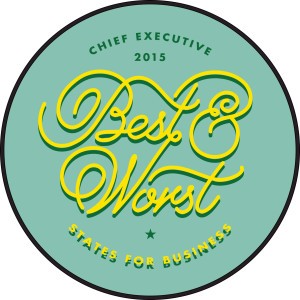Saul Kaplan: So Many Corporate Innovation Labs, So Little Innovation
Wednesday, April 20, 2016

It’s not going well.
The CEOs I talk with admit privately that they’re getting tired of hearing Uber, Airbnb and Netflix disruption stories. They want their organizations to play more offense. They want to be market-makers, not just share-takers.
In response, CEOs have climbed onto the innovation-lab bandwagon. Corporate innovation labs have sprung up like weeds across industries around the world. Any self-respecting CEO now has a corporate innovation lab!
I have visited many of these innovation labs and spoken with those who’ve been tapped on the shoulder to start and lead them. My overall impression is that, at best, most of these innovation labs will produce only tweaks to today’s business models.
Innovation labs will launch with lofty rhetoric from CEOs about transformation and thinking out-of-the-box. But as soon as line executives and business unit leaders get control of the lab’s agenda, it is destined to produce only tweaks. This shouldn’t be a surprise, because corporate innovation labs are structured, resourced and governed to produce incremental improvements to today’s business models.
Lab projects are prioritized and funded to produce new products, services and tech-enabled capabilities that will improve performance of today’s business. The projects compete for resources based on financial metrics relevant to the current business model.
There is nothing wrong with that approach—leaders should always improve their current business model to stay competitive. But here’s the rub—today’s corporate innovation labs won’t help a company avoid being ‘netflixed’ or disrupted by an entirely different business model.
My conclusion: Corporate innovation labs aren’t set up in ways that will help companies avoid disruption. Here’s why.
10 Reasons Corporate Innovation Labs Produce Only Tweaks
1) Innovation lab mandates aren’t clear. Incremental versus transformational innovation require very different organizational approaches and support.
2) CEOs must own the transformational agenda. Instead they cede authority to line executives who are accountable for the performance of today’s business model.
3) Innovation labs overemphasize the production of a better mousetrap, as opposed to a better business model.
4) Potential innovation projects that may cannibalize current business are taken off the table, severely limiting the innovation lab’s scope.
5) Requiring a financial forecast for an innovation project—before exploring it in the real world—only works for tweaks, never for transformation.
6) Corporate innovation labs see emerging technologies through the lens of today’s business model, as opposed to a catalyst for an entirely new model.
7) Corporate innovation labs have difficulty shifting their perspective to see opportunities through the lens of customer experience and jobs-to-be-done.
8) Corporate venture funds are not innovation labs. They may provide startup capital to entrepreneurs, but withhold the company’s most important assets: scalable capabilities and market access.
9) Innovation labs aren’t organized as a connected adjacency to the core, a sandbox where capabilities can be combined and recombined, to change how customer value is created, delivered and captured.
10) Companies lack the talent systems to develop future leaders with experience working both in the core and in the innovation lab.
I think we all know that tweaks are necessary—we should all get better every day. But tweaks aren’t sufficient. If tweaking the way things worked today were enough, life would be so much easier. Sometimes we need transformation, and this is one of those times. In the 21stcentury, the most important life skill—and corporate capability—is reinvention,.
Transformation, disruption and reinvention don’t have to be scare words. We can create the conditions to explore and test entire new business models while we are still pedaling the bicycle of today’s models.
An important mandate for these new innovation labs is to do R&D for new business models, the same way we do R&D today for new products, services and technologies. R&D for new business models is the new strategic imperative. Corporate innovation strategies must create discrete approaches to deliver incremental improvements to today’s models, while also enabling the exploration of entire new models. Doing so It will require more clarity on the objectives of the innovation lab, as well as and recognition that the same structure, approach, resourcing, staffing and governance will not work for both incremental and transformational innovation.
It’s a good thing CEOs are taking innovation seriously. I sense they’re realizing that just setting up an innovation lab and delegating it to line executives isn’t enough, and they’re right. I’m finding more CEOs open to talking about how business model innovation fits into their strategic agendas, and I predict we will begin to see this new imperative better reflected in their organizational approaches to innovation.
Today I stand by my observation: So many corporate innovation labs, so little innovation. Tomorrow I expect we will see more corporate business model sandboxes to make R&D for new business models an ongoing strategic capability.

Related Slideshow: Oregon Business Rankings in US
See how Oregon stacked up against the other states in the U.S.
Related Articles
- Saul Kaplan: Where Have All The Corporate Stories Gone?
- Saul Kaplan: You Don’t Have to Go to a Conference to Enjoy It
- Saul Kaplan: The Human Side of Innovation
- Saul Kaplan: Stop Treating Business Model Innovation As Change Management
- Saul Kaplan: Reinvention As A Life Skill
- Saul Kaplan: Emerging Tech Is Society’s Shadow Future






















Follow us on Pinterest Google + Facebook Twitter See It Read It